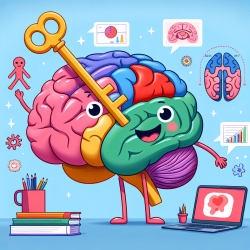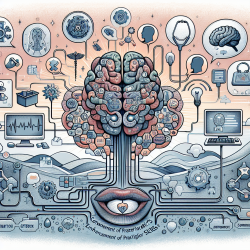Understanding Autism through Brain Morphology
As practitioners in the field of special education and therapy, understanding the complexities of Autism Spectrum Disorder (ASD) is crucial. Recent research on morphological alterations in the thalamus, striatum, and pallidum provides new insights into ASD, potentially enhancing therapeutic approaches. This blog will explore the findings of this study and how they can be applied in practice.
Key Findings of the Study
The study, "Morphological Alterations in the Thalamus, Striatum, and Pallidum in Autism Spectrum Disorder," utilized advanced surface-based methodology to examine localized differences in shape and surface area of these subcortical structures. The research involved 373 male participants with ASD and 384 typically developing participants, aged 7-35 years.
Key findings include:
- Expanded surface area in the right posterior thalamus, corresponding to the pulvinar nucleus, in participants with ASD.
- A more concave shape in the left mediodorsal nucleus of the thalamus.
- Steeper increase in concavity with age in the caudal putamen and pallidum among ASD participants.
- Association between restricted, repetitive behaviors and increased surface area in the bilateral globus pallidus.
Implications for Practitioners
Understanding these morphological differences can guide practitioners in tailoring interventions for individuals with ASD. Here are some ways to incorporate these findings into practice:
- Personalized Therapy: Recognize the diverse symptom profiles in ASD and adjust therapeutic strategies accordingly. For example, focus on enhancing motor skills if morphological changes in the basal ganglia suggest motor impairments.
- Targeted Interventions: Use insights into thalamic and basal ganglia alterations to develop targeted interventions that address specific cognitive, emotional, and motor challenges faced by individuals with ASD.
- Further Research: Encourage ongoing research and collaboration with neuroscientists to deepen understanding of the neural basis of ASD and improve therapeutic outcomes.
Encouraging Further Research
The study highlights the importance of surface-based approaches in detecting localized differences in subcortical structures. Practitioners are encouraged to stay informed about emerging research and consider collaborating with researchers to explore new therapeutic avenues.
Conclusion
By integrating the latest research findings into practice, practitioners can enhance their understanding of ASD and improve the quality of care provided to individuals with this complex disorder. For those interested in delving deeper into the research, the original paper provides a comprehensive analysis of these morphological alterations.
To read the original research paper, please follow this link: Morphological Alterations in the Thalamus, Striatum, and Pallidum in Autism Spectrum Disorder.










